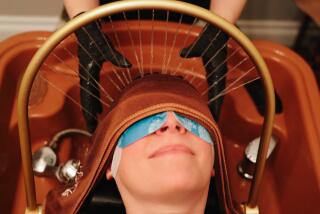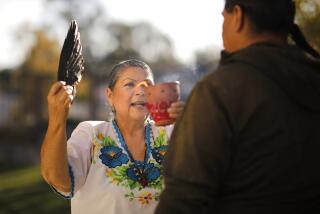Letters: Many views of ‘alternative’ treatment
- Share via
The recent series of articles by Trine Tsouderos in the Los Angeles Times misrepresents the scientific contributions and future research agenda of the National Institutes of Health and its National Center for Complementary and Alternative Medicine [“New Age Cures Put to the Test,” Jan. 23].
In its 12 years as an NIH center, NCCAM’s more than 3,000 research studies have provided answers to important questions about complementary health approaches to help consumers and medical professionals make informed decisions. For example, we now have good evidence from studies showing that practices such as yoga, massage, chiropractic and acupuncture can help people with chronic pain, often difficult to treat. This research foundation supports NCCAM’s current priorities and future directions: to develop better strategies for managing pain and to study the integration of evidence-based complementary practices in promoting healthier behaviors.
NCCAM research has also shown that a number of herbal and dietary supplement products (including gingko and echinacea) are not helpful in treating or preventing illness. And NCCAM has supported important research documenting concerns about safety, adulteration or contamination of a number of products readily available to consumers.
About 40% of Americans spend nearly $34 billion annually on complementary approaches. People need research to help inform their decisions, but there is little private -ector investment in this science. Detailed information about NCCAM’s research activities and future directions can be seen at https://www.nccam.nih.gov.
Dr. Josephine Briggs
Director, National Center for Complementary and Alternative Medicine
::
While testing funded by NCCAM may not fit into the traditional methods of scientific studies, it does offer hope of finding alternatives to costly (and sometimes ineffective) medical treatment.
I hope that the NCCAM continues its research and proves that not every cure can be understood by smearing it on a piece of glass and sticking it under a microscope.
Christopher Grisanti
Monrovia
::
Sen. Tom Harkin of Iowa may not be bothered by the government spending “millions” of dollars on research “with questionable grounding in science,” but as a California taxpayer whose taxes help pay such government largess, I am.
What an outrage to spend these huge sums of money for qigong and acupuncture studies at a time when people are going without food or shelter.
David Tulanian
Los Angeles
::
I had a very large Baker’s cyst in my knee. Surgically removing it was deemed too risky. The orthopedist drained it several times; the fluid (more than 65 cc) returned by the next day. He thought repairing my torn meniscus might solve the problem; the fluid returned days after surgery.
I eventually turned to acupuncture. After several months of treatment, the cyst shrank so much that I could not detect it. It remains that way many years later.
Perhaps one day a researcher will figure out why. Meanwhile, I hope research into acupuncture and other promising “alternative” methods continues.
Melissa Stoller
Los Angeles
::
Energy healing is yet another manifestation of a theory that was conclusively refuted in 1784 in a series of remarkably sophisticated experiments by a panel of distinguished scientists including Benjamin Franklin.
Thomas S. Ball
Diamond Bar
::
Three years ago, my 100-pound German Shepherd developed severe arthritis. Her spine became fused, and she had terrible problems just rising from a lying-down position.
Someone I trust implicitly recommended an acupuncturist based upon their own dog’s results. I would never have tried it otherwise. I started taking my dog for treatments and soon, after seeing her results, a second dog with even worse problems. Both had dysplasia, among other things (they were very old and very large, so this was not uncommon).
A dog wouldn’t know if he was being given a real treatment or a placebo. All my dogs knew was that every time they got a treatment, within two days or less, they were feeling better. This was not in their imaginations ... or mine. The improvement was visible and remarkable.
The Chinese aren’t idiots, and their medicine is literally thousands of years older than ours. Why would we doubt its efficacy? Not every treatment in Western medicine works well; why expect every one of theirs to? But some treatments work beautifully.
Kristene Wallis
Valley Village
Letters should be brief and may be edited for length and clarity. Email health@latimes.com. Please include your full name (no pseudonyms) and city of residence.






